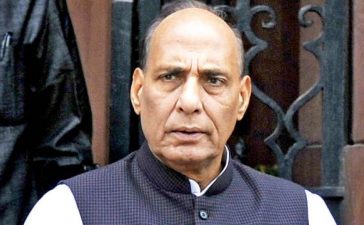 Mumbai: GVK has been finalised by Maharashtra’s CIDCO to construct the upcoming Rs 16,000 crore Navi Mumbai International Airport, a greenfield project situated on the mainland, an official said here on Monday.GVK, which currently manages the Mumbai International Airport Ltd, submitted the highest revenue sharing model of 12.6 percent per annum, while its sole closest competitor GMR, which managed the New Delhi airport, quoted a figure of 10.44 percent.
Mumbai: GVK has been finalised by Maharashtra’s CIDCO to construct the upcoming Rs 16,000 crore Navi Mumbai International Airport, a greenfield project situated on the mainland, an official said here on Monday.GVK, which currently manages the Mumbai International Airport Ltd, submitted the highest revenue sharing model of 12.6 percent per annum, while its sole closest competitor GMR, which managed the New Delhi airport, quoted a figure of 10.44 percent.
“Since the GVK bid is the best on the last day of the bidding process, the project will be awarded to them,” City and Industrial Development Corporation (CIDCO) chief spokesperson Mohan Ninave .The new airport will be constructed on a public-private-partnership model (PPP) for which CIDCO will foot the pre-development expenses that will be later recovered from GVK.MIAL Executive Chairman and founder Chairman and MD of GVK, G.V.K. Reddy said: “It is a matter of immense pride for MIAL and GVK to have won the bid for building, developing and operating the Greenfield Navi Mumbai International Airport project. This is further testimony to our commitment that was ably demonstrated in the making of the iconic Terminal 2, along with the creation of efficient airside operations in a severely constrained Mumbai airport.”
He said th GVK will remain committed towards creating, designing and managing yet another state-of-the-art airport, and deliver a world class gateway from Navi Mumbai to the world.Reddy added that it looked forward to working with the Maharashtra government, CIDCO and all other stakeholders for the successful implementation of this exciting and challenging project.The first phase of NVIA, coming up on 1,660 hectares of land spread across the adjacent districts of Thane and Raigad, is expected to be operational by December 2019 with a capacity of 10 million passengers per annum, he added.
Ninave said that when the full NMIA is completed by 2030, it will have a capacity of handling 60 million passengers, making it among the biggest in the world.After the new airport is fully operational, it would decongest the load on single-runway MIAL which is considered to have reached a saturation point.The MIAL is overstretched currently, handling 40 million passengers per year, with growth in passenger traffic estimated at 23 percent annually, with virtually no scope for expansion.Over the years, the NMIA is expected to become a focal point for the emergence of a South Asian trans-shipment centre.






